Meet David Popp
What was your first train set?
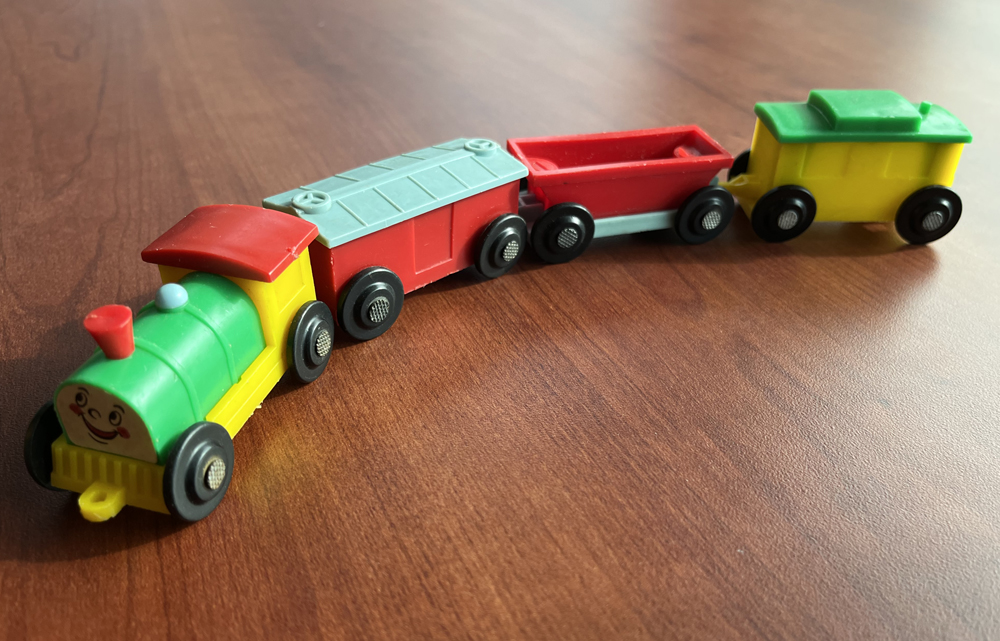
With a dad and grandfather both into model trains, I was surrounded by model railroading from an early age. The first train I can remember that I was given was a colorful plastic version of what we would now call Brio trains. It had silver-colored plastic track sections that connected much like today’s wooden tracks do.
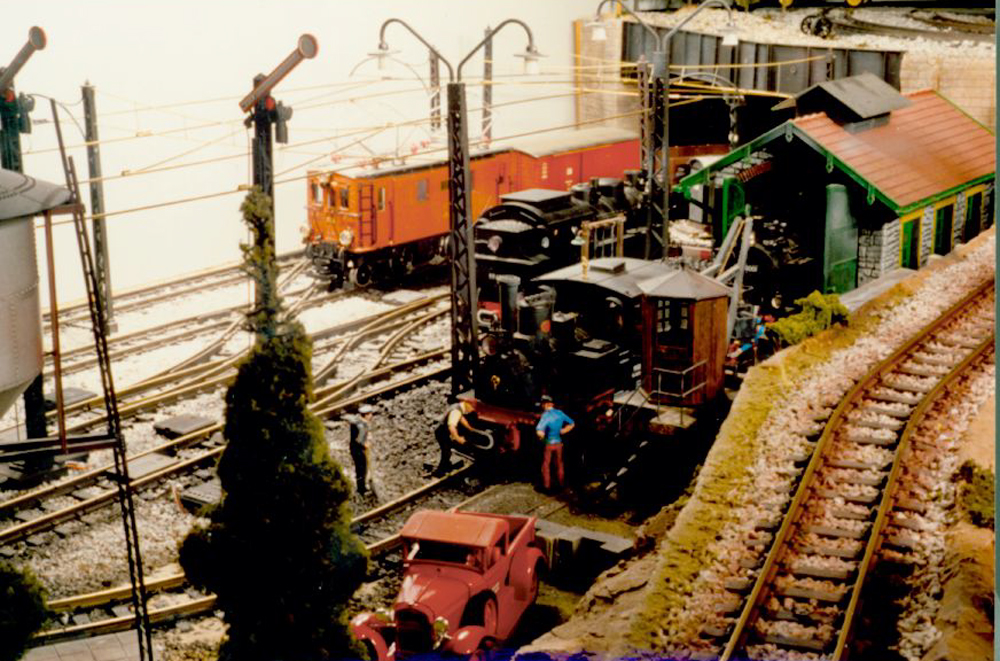
However, my first electric train set I remember very well. It was an HO scale Tyco Santa Fe freight set from the early 1970s. Dad built a simple plywood layout for me that slipped under my bed, and he showed me how to build a mountain out of chicken wire and newspaper strips dipped in plaster. I put a lot of miles on that train, and many of the cars lived on to other layouts all through my childhood and into my 20s!
Describe your model railroading philosophy in 6 words.
Build what makes you happy.
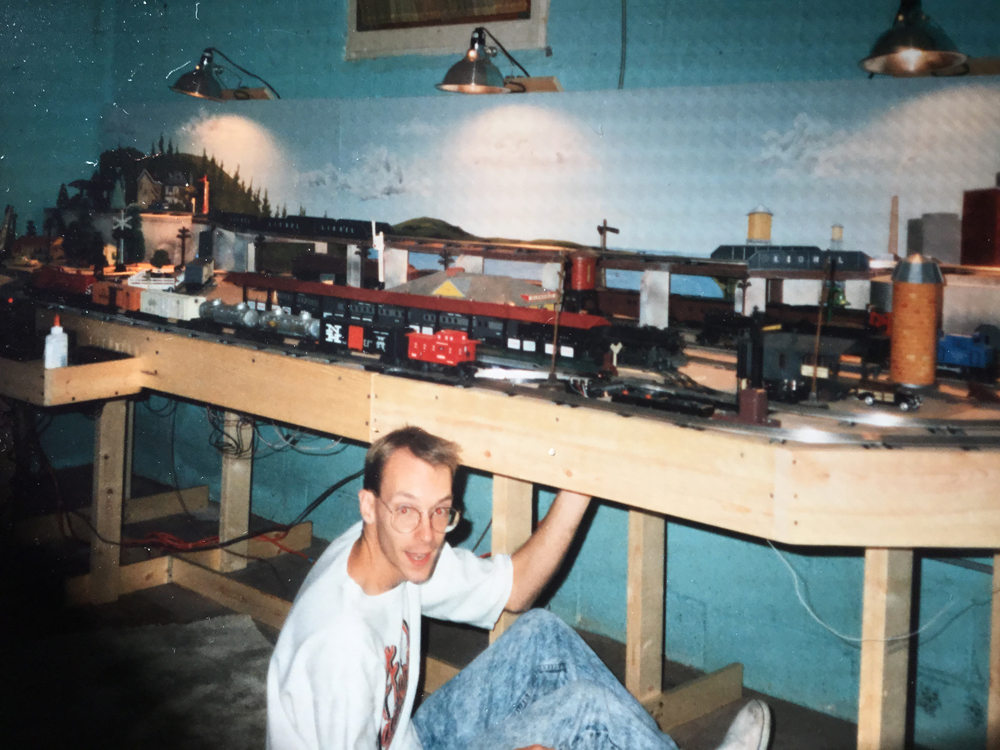
While I strive for a level of accuracy, I also love creating visually appealing scenes, so I’m willing to compromise to get a pleasing finished layout. I also tend to lean toward modeling the world as I wish it could be versus how it really looks. My buildings are never quite rundown enough. My trains are never quite rusty enough. The fact that my current layout models a thriving logging railroad should tell you that I prefer my miniature world to be somewhat more positive than the real thing usually turns out to be. For me this is how I’ve always relaxed. Even though it’s also been my job from more than 20 years, I still enjoy it very much. So build what makes you happy.
What has been your biggest modeling success?
By far, my biggest modeling success is that my work was good enough to land a job at Model Railroader magazine. Dad read it to me since I was a toddler. In grade school I would read his collection of modeling magazines and books every summer. I remember sitting on the back porch on one of those days with an issue of the magazine and dreaming of getting to work at Kalmbach someday – wondering how that could even be possible. In 2001, I got my wish, simply because I applied to an ad posted in the magazine. I had just sold my first article to MR six months before. Most days since then it’s been a dream job, and I’ve also become a far better modeler since then too – I’ve gotten a lot of practice in 21 years!
What was your biggest modeling mistake?
I love streetcars and interurbans. When I was in college, I got it into my head that I wanted to build an N scale streetcar layout. I didn’t have a lot of space, so it was only about 14” wide by 40” long. I could fit just 3 city blocks onto the benchwork.
The problem was that there were few choices for N scale streetcars in the early 80s. The ones I could get had terrible plastic gears, and none of the cars could pivot around the tight-radius curves needed to make the layout work.
I built the layout anyway, at least as far as laying the track and spending a lot of money on plastic structure kits to build the three city blocks. I worked like mad for a year trying to modify several N scale models to handle those curves, but I could never get it to work. I eventually sold all of the structures at a flea market and scrapped the cars. Amazingly enough, I never shot a single photo of the layout – why spend money on film when you could buy another kit?
What is your least favorite modeling task?
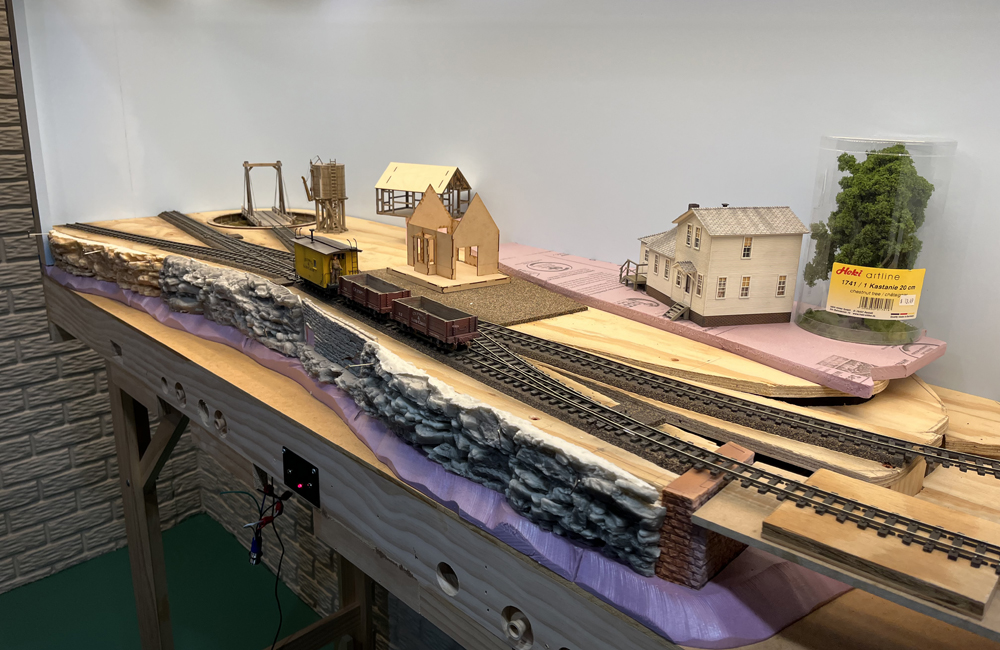
Ballasting track – no doubt about it. I’m not one for tedious, repetitive tasks, and that’s exactly what good ballasting requires. Don’t look at my ballast too closely – you will likely be disappointed!
What projects have you been working on recently?
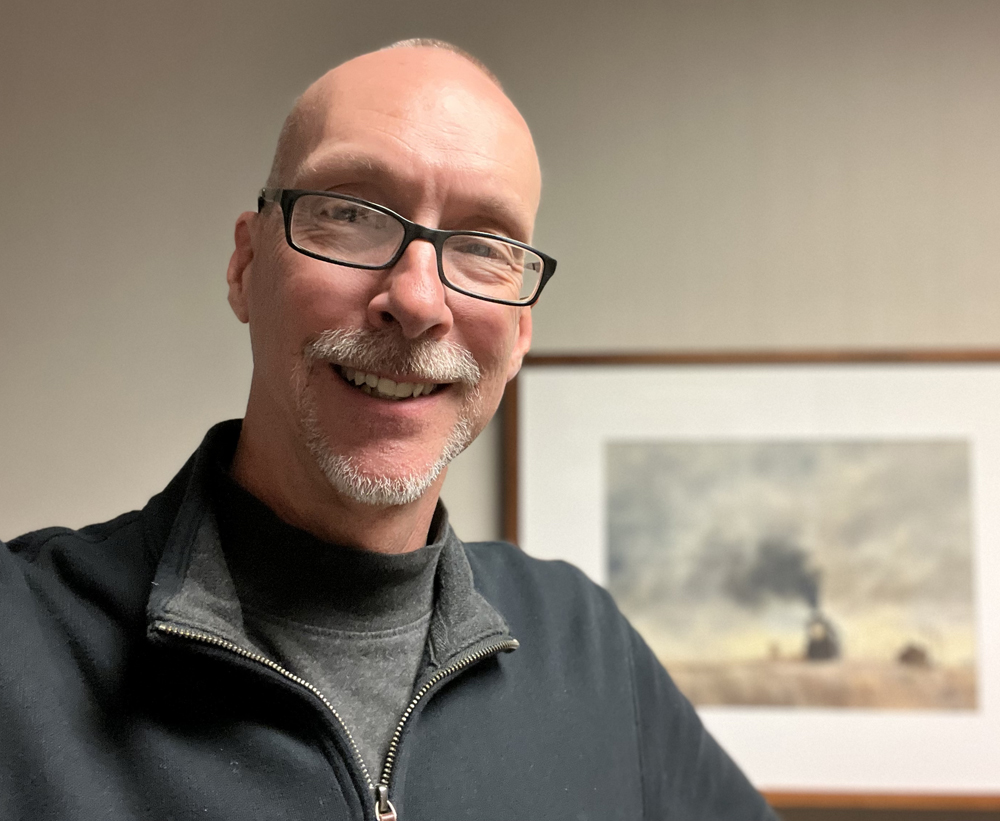
Working for Trains.com, I’m always building something, however my current home layout is my On30 Olympia Logging layout. It started several years ago as a project railroad for Model Railroader Video Plus, and while it was fun to build, at just 22” wide by 78” long, it wasn’t very interesting when it was finished. After all the videos were shot, I took it home and doubled its length to 13 feet, creating another video series along the way.
I’m now in the process of adding a final section to it and filming yet another video series: Olympia & Sand Creek. Having modeled a compact logging camp and a sawmill already, I decided to do something different this time by modeling a small town and a bit of a gravel pit.
When it’s complete, it will have a detailed rural station scene. It will also feature a model of my wife’s 1830s-vintage family farmhouse, built for me as another video series by talented structure modeler, Renee Grosser.
One of my favorite recent projects was adding custom ambient sounds to this section of the layout. The scenery is barely started, yet you can already hear all the noises you’d expect from a sleepy 1900s rural town along a mountain stream, which adds to the excitement of making the new section.
What advice would you give new hobbyists?
Look for inspiration from fellow modelers and real-world photographs. Find something you like, and then try to emulate that – photos make modeling work so much easier.
Also, don’t be afraid to try new things. Yes, you’ll make mistakes along the way, but doing something hands-on is by far the best way to learn. There is very little in model railroading that cannot simply be fixed or replaced when you don’t like how it turned out. I’ve replaced entire sections of model railroads more than once, and I’ve also destroyed my share of DCC decoders too. Trying these things again, even when costly, has always been the right choice.
Finally, if you reach a frustration point in a task or project, walk away from it for a bit. You’ll be surprised at how much easier a difficult task can go if you just take some time to clear your head. I almost always come back with an idea for a better way to do something after I’ve taken a break. Model railroading is supposed to be relaxing, after all, so if it’s driving you crazy, you’re likely trying too hard.
BONUS question!
What is the biggest advance you’ve seen in the hobby lately?
I’d have to say that capacitor packs for DCC-equipped locomotives has been a game changer. When sound became a regular feature in model trains in the 2000s, the slightest interruption of power to the engine would cause the sound to drop out, and for many decoders, that would mean a return to the engine start-up sequence. Also, trains stuttering or stalling on turnouts and dirty track was very common, and it could be a problem on even the best layouts I’ve operated on.
However, the new capacitor packs offered by a variety of DCC manufacturers in the past several years have virtually eliminated these problems. For me, they’ve really made running trains enjoyable and trouble-free. I’ve been installing them on all of my HO, OO, and On30 DCC models. (Yes, I also have a collection of British OO trains.)














Anyone know what happened to David’s N-scale New Haven layout? Was it sold to someone or was it destroyed?
One more note. if anybody reading this article remembers those Bachmann N trollers plus the earlier Model Power N scale trolley sets. Bachmann produced both the Brill trolley and later the PCC trolley as well as a Peter Witt car in n scale and Bachmann would first come out with an HO version and then about a year or so later the N scale version. Bachmann still makes an updated and improved N scale version of their Brill car and there has to be hundreds of their earlier models of both the Brill and PCC models as well as the Peter Witt car. Joseph C Markfelder
Very informative and entertaining article. I remember those N scale trollers from the 80s and 90s. Bachmann made both Brill and PCC trollers and I also like trollers and streetcars and converted part of an early layout into a streetcar system But those Bachmann trollers while detailed and nice left much to be desired with both the motors and plastic gears which often jammed up and made a terrible grinding sound while running. I eventually took some of the best ones and referred them using cannibalized parts from others The newer ones that are now made are an improvement over the earlier models but still could use more improving. I also remember Model Power having a two car trolley set in N scale. A powered unit and a trailer car. Very nice but the motor and running were of poor quality. Joseph C Markfelder
Very nice overview article!
Thanks David… I became a better modeler because of you through your MRVP creation. From frog juicers, Tortoise switch machine installation/wiring, suit case connectors and sectional block wiring, you made my layout much easier to run while eliminating numerous problems. Merry Christmas everyone! Sherpa Al
Thanks for sharing this very interesting biography. I was really inspired by David’s N scale New Haven layout. It did an amazing job of capturing the feel of 50’s and 60’s era New England. The structures and scenery were top notch, especially the Waterbury, Conn. station. I wish everyone at Kalmbach a Merry Christmas.